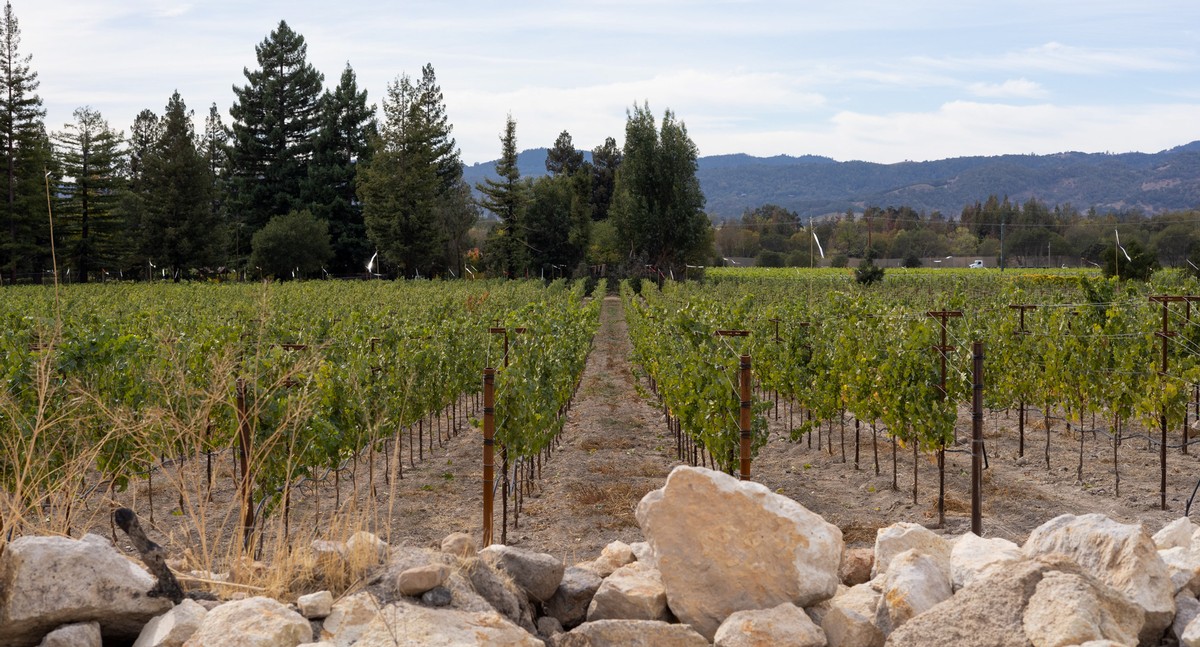Stagecoach Vineyards
The Krupp family started developing Stagecoach Vineyard in 1995 with the help of a few longtime friends. With over 500 acres planted, it is the largest contiguous mountain planting in the Napa Valley. Stretching from the westernmost regions of Atlas Peak all the way to the east overlooking Oakville, this 1,200+ acres of rocky, volcanic terroir graces the southern edge of Pritchard Hill.
Dr. Jan Krupp's task was labeled initially by local experts as insurmountable, but soon after planting began, many of Napa's most successful wineries and winemakers lined up to buy fruit from Stagecoach. Today over 50 wineries craft incredible wines from the doctor's endeavors. These vintners are continually impressed with the character and complexity found in our mountain grapes.
Dr. Jan Krupp's task was labeled initially by local experts as insurmountable, but soon after planting began, many of Napa's most successful wineries and winemakers lined up to buy fruit from Stagecoach. Today over 50 wineries craft incredible wines from the doctor's endeavors. These vintners are continually impressed with the character and complexity found in our mountain grapes.
Settlers in the 1800s were the first to learn about the well-drained soils and perfect growing conditions found on our hill. Each harvest they would haul their crop by horse and wagon down into Oakville fetching the highest prices in the valley. By the early 1900s the increased deer population resulted in extensive crop loss leading to the abandonment of all viticulture on the hill by Prohibition.
Reclaimed from chaparral and sagebrush, over a half million tons of rock excavated, and water found where no geologist could divine, modern day Stagecoach Vineyard is truly a gem in the rough.
Reclaimed from chaparral and sagebrush, over a half million tons of rock excavated, and water found where no geologist could divine, modern day Stagecoach Vineyard is truly a gem in the rough.
Terra Del Cuore Vineyard

When the Patlands first found the Terra del Cuore estate, vines had already been planted. In keeping with the Tuscan style and Italian flare of the property, the fruit growing was predominantly of Italian varietals. Even the elusive Sangioves grape was found on sight. Today, hand-carved wooden signs can still be found along the vineyard areas marking the grapes that were once produced there.
Since the Patlands founded their winery, all of the fruit at Terra del Cuore has been changed. Under the advisement of their winemaker, Jay Buoncristiani, they had the vines grafted to Malbec--as can be seen in the picture above. Some challenged the idea, claiming that Malbec was not popular enough to do well in the area, but Jay insisted he was simply ahead of his time. Turned out, he was right! Initially the fruit was to be used as a blending grape to soften the otherwise bold characteristics of Patland Estate Vineyard's flagship Cabernet Sauvignon. However, in a blending tasting with Jay, the Patlands realized that the Malbec alone tasted exquisite. So they decided then and there to produce a 100% estate Malbec for all the following years.
Patland's Oaknoll Vineyard

In 2019, the Patland family acquired a picturesque plot of land nestled along the Silverado Trail. Henry Patland had been captivated by this unique property for several years, and following the 2017 Atlas Peak Fire, the opportunity finally arose as the previous owners were ready to part with it. Despite the fire's devastation, which spared only the vines, a pond, and a small garage, the vineyard faced challenges stemming from fire damage and aging vines.
To rejuvenate the vineyard, the Patlands made a bold decision: they opted to remove the existing vines, trellising, and irrigation systems. In their place, they introduced state-of-the-art equipment and fresh budwood sourced from esteemed sites, including the renowned Stagecoach vineyard. Additionally, the family expanded the 4 acre vineyard by approximately an acre—an ambitious endeavor that proved both daunting and immensely insightful.
The expansion required extensive efforts—ripping, digging, and crushing significantly more rock from the soil than initially anticipated. These challenges unveiled the vineyard's character: its rocky, sandy terrain, which offers exceptional drainage—a trait shared with the acclaimed Oak Knoll District. Indeed, remnants of these rocks now line the vineyard's perimeter.
Today, as you explore the vineyard, these distinctive features underscore its identity as Patland's Oak Knoll Vineyard, reflecting its unique terroir and the Patland family's dedication to crafting exceptional wines.

